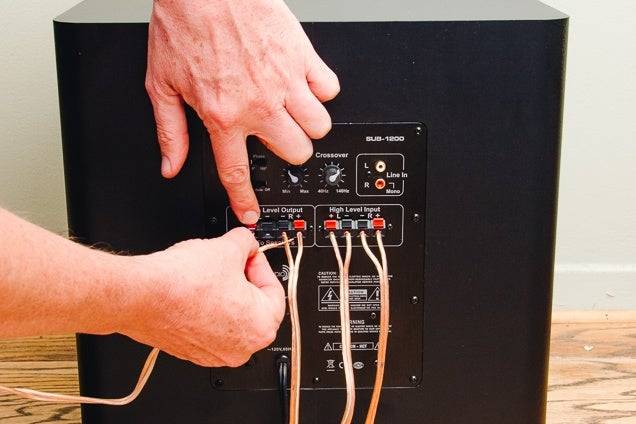
Unfortunately,there is a path from power (coming in through “d”) to the “b or c” output. The “b or c” output should be “0” and the “c or d” outputshould be “1”. To see the problem, imagine thatinputs “b” and “c” are “0” and input “d” is “1”. Below is an example where the wired-ORcircuit will produce the wrong result. The wired-OR circuit will work insome situations, but will not work properly in every situation. Since each input iseither connected to power or unconnected, tying them together will mean thatthe output is connected to power if either of the inputs is.

You might suggest the following“optimized” version of the “OR” circuit, which I call the “wired-OR”circuit. Here is a circuit implementingthe logical “OR” function, using two relays: With an input of “0”, the relaywill be off, as shown, and the output will be connected to power, which meansthe output will be “1.” An inputof “1” will cause the relay to turn on, which will break the connection topower and cause the output to be “0”.

Here is a circuit implementing the logical “NOT” function with a single relay. It is very much a “logical”design, not an electronic circuit. All that matters is whether there is a path to +V ornot. This is anelectric computer, not an electronic computer. In the design of this computer,concepts like charge, current, capacitance, resistance and inductance can bepretty much ignored. The relay is a robust, resilientdevice when compared to transistors or integrated circuits. And if the wire is truly unconnected to anything else, then we reallydon’t care what voltage charge it carries. If such a wire is connected to another relay coil or to a light, thenany voltage charge on the wire will quickly fall to zero as the electricitybleeds out through the relay or light. A logical “0” is represented with “no connection topower.” Note that this is differentthan saying “0” is a connection to ground.Ī wire that is not connected topower will essentially be at zero volts. We represent a logical “1” with aconnection to 12 volt power, symbolized as +V. The diagram on the right is convenient since it shows the positions ofthe external connections. The diagram onthe left is the traditional notation. Here are some other schematicrepresentations. For all the relays in this computer,one terminal of the coil is always connected to ground. Theassumption is that the second connection is to ground. Notice that only one connectionto the coil is shown. Normally, relays are drawn in the“off” position, but sometimes it helps in understanding a circuit to portraysome relays in the “on” position. In designing the circuits used in the computer, I invented the followingschematic diagram to represent a relay. As you can see, these relays have aplastic cover, which makes this computer completely immune to “bugs.” Incidentally, the term “computerbug” originated when a program failure was found to be caused by a moth, whichhad gotten caught between two contacts in an early relay-based computer. The relays are 12 volt relays and thecomputer is powered with 12 volts DC. For this reason, the relay is called afour-pole, double-throw relay.Īll the relays used in thiscomputer are the identical part, which is pictured below.

When on, theelectromagnet operates all four switches in unison. The relays used in this computerhave, not one, but four identical switches located next to theelectromagnet. Double-throw switches are also calledon-on switches. In one position themovable contact makes a connection with a second contact, while in the otherposition the movable contact makes a connection with the third contact. A relay consistsof an electromagnet that operates a nearby switch.Ī double-throw switch has threecontacts. When the electricity is removed, a spring pulls the switch back into theother position.
:max_bytes(150000):strip_icc()/GettyImages-149309495-5bf08f5a46e0fb0026582db6.jpg)
When electricity passes through the coil, the magnetic fieldmoves the switch into one position. In every relay, there is a smallswitch situated next to the electromagnet. When electricity passes through the coil, a magnetic fieldis created and when the electricity is disconnected, the magnetic fieldcollapses. An electromagnet issimply a coil of wire, wound around an iron core. Which contains a number of photosand videos. The computer, which was completed in 2005, is documented at This paper describes the designof a computer that I built out of relays. GOTO Variant: The BNZ (Branch-If-Not-Zero) Instruction GOTO Variant: The BZ (Branch-If-Zero) Instruction GOTO Variant: The BNC (Branch-If-No-Carry) Instruction GOTO Variant: The BNEG (Branch-If-Neg) Instruction GOTO: The Goto Instruction – General Form MOV-16: The Return / Branch-Indirect Instruction MOV-16: The 16-Bit Move Instruction – General Form Physical Organization of Major Functional Units Differences With the “As-Built” Register Circuit


 0 kommentar(er)
0 kommentar(er)
